|
DEPARRMENT OF PHARMACY MEERUT INSTITUTE OF TECHNOLOGY, MEERUT |
|
S.No. |
Subject Code |
Subject Name |
Outcomes |
|
1 |
BP101T |
Human Anatomy and Physiology– Theory |
CO1 |
Explain the gross morphology, structure and functions of various tissues and organs of the human body. |
|
CO2 |
Describe the structure and functions of the skeletal and integumentary system. |
|
CO3 |
Describe the structure and functions of various body fluids (viz. blood and lymph) and their disorder. |
|
CO4 |
Identify the structure and functions of the Peripheral nervous system and various sense organs. |
|
CO5 |
Explain the anatomy, physiology and pathophysiology of cardiovascular system. |
|
2 |
BP102T |
Pharmaceutical Analysis I– Theory |
CO1 |
Explain the basic fundamentals of analytical chemistry |
|
CO2 |
Apply various principles of volumetric (Aqueous and Non aqueous) titrations |
|
CO3 |
Report various problems related to Volumetric titrations in analysis and research |
|
CO4 |
Compare applications of volumetric, gravimetric, and electrochemical analysis |
|
CO5 |
Assess various parameters related to analysis of Pharmaceutical compounds |
|
3 |
BP103T |
Pharmaceutics I – Theory |
CO1 |
To understand the history of Pharmacy, scope of Pharmacy , Pharmacopoeias, excipients and basic terms with pharmaceutical formulation |
|
CO2 |
To understand the parts of prescription |
|
CO3 |
To analyze simple pharmaceutical calculations applied in the preparation of formulations, dilution, strengths and posology |
|
CO4 |
To apply the conventional dosage forms e.g. liquid, powder and semisolid into pharmacy practice. |
|
CO5 |
To evaluate pharmaceutical incompatibilities and instabilities in the formulation or justify their rationale. |
|
4 |
BP104T |
Pharmaceutical Inorganic Chemistry– Theory |
CO1 |
Know the history of pharmacopoeia, sources of impurities and methods to determine in inorganic drugs and pharmaceuticals. |
|
CO2 |
Understand the basic concepts, medicinal and pharmaceutical importance of inorganic and radiopharmaceutical compounds. |
|
CO3 |
Explain mechanism of action of selected inorganic drugs and pharmaceuticals. |
|
CO4 |
Make use of methods of preparation, properties and quantitative determination of variuos inorganic and pharmaceutical compounds. |
|
CO5 |
Apply the concepts of buffers and methods of adjusting isotonicity. |
|
5 |
BP105T |
Communication Skills – Theory |
CO1 |
Students will be proficient in English language and in converting into actionable knowledge. |
|
CO2 |
Students will be able to appreciate and practice the unique qualities of professional rhetoric and writing style. Developing individual speech delivery and stylization. |
|
CO3 |
Students will be confident and develop effective speaking ability for presentations and develop thinking . |
|
CO4 |
Writing skills & innovative ideas. Propagating skills for interviews. Students will be able to master the skill of Curriculum-Vitae, Resume, and Bio-Data and communicate effectively with report writing, documentation and giving and receiving clear instructions. |
|
CO5 |
Students will be participative and assertive. Students will be able to understand logical issues and value system. |
|
6 |
BP106RMT |
Remedial Mathematics – Theory |
CO1 |
Understand the theory used in application of Partial Fraction in Chemical Kinetics and Pharmacokinetics, logarithm to solving pharmaceutical problems |
|
CO2 |
Understand the concepts of Matrices and determinant used in application to solving Pharmacokinetic equations |
|
CO3 |
Understand the concepts of function, limit, continuity, differentiability and Integration used in application of mathematics in Pharmacy |
|
CO4 |
Understand the concepts of Coordinate Geometry used in application of mathematics in Pharmacy |
|
CO5 |
Understand the concept of Differential equations and Laplace transform used in application to solving chemical kinetics and Pharmacokinetics equations |
|
7 |
BP106RBT |
Remedial Biology – Theory |
CO1 |
Classify the salient features of five kingdoms of life |
|
CO2 |
Understand the basic components of anatomy of plant |
|
CO3 |
Understand the basic components of morphology of plant |
|
CO4 |
understand the basic components of anatomy& physiology animal with special reference to human |
|
8 |
BP107P |
Human Anatomy and Physiology – Practical |
CO1 |
Describe the use and scope of microscope. |
|
CO2 |
Identify the microscopic structure of various tissues. |
|
CO3 |
Identify the structure and function of bones |
|
CO4 |
Analyze the various parameter of their own blood. |
|
CO5 |
Examine the blood pressure, heart rate and pulse rate. |
|
9 |
BP108P |
Pharmaceutical AnalysisI – Practical |
CO1 |
Apply methods of preparation for various Normal and Molar solutions. |
|
CO2 |
Demonstrate methods of standardization of a solution by using volumetric analysis |
|
CO3 |
Understand methods of standardization of a solution by using electroanalytical methods |
|
CO4 |
Make use of volumetric analysis for the quantitative estimation of a sample |
|
CO5 |
Investigate the level of impurities in pharmaceuticals by using limit test |
|
10 |
BP109P |
Pharmaceutics I – Practical |
CO1 |
To understand simple dosage forms and its usage, and understand the role of each added ingredients. |
|
CO2 |
To calculate quantity of each exicipient and devise plan as par the requirement of dosage form. |
|
CO3 |
To create simple dosage form with rationale of each exicpient and its method of preparation. |
|
CO4 |
To select a proper container system and follow labeling instruction during dispensing of drug |
|
CO5 |
To understand design label with general and specific instructions relevant to product stability, indications and contraindications. |
|
11 |
BP110P |
Pharmaceutical Inorganic Chemistry– Practical |
CO1 |
Examine the impurity level by using limit test. |
|
CO2 |
Identify qualitatively the various inorganic ions. |
|
CO3 |
Demonstrate the method of preparation of inorganic compounds. |
|
CO4 |
Make use of limit test for various colored and insoluble inorganic compounds . |
|
CO5 |
Analyze test for purity with respect to various parameters of inorganic compounds. |
|
12 |
BP111P |
Communication Skills – Practical |
CO1 |
Development of conversational skills for seminars/workshops. |
|
CO2 |
Propagating skills for interviews under suitable interactive patterns. |
|
CO3 |
Initiating public speaking skills based on rhythmic patterns and perfection in delivery. |
|
CO4 |
Preparation for technical paper/professional representation based on proper stress intonation mechanics. |
|
CO5 |
Developing individual speech delivery and stylization. |
|
13 |
BP112RBP |
RemedialBiology– Practical |
CO1 |
Contrast the gross microscopy and identification of plant tissues. |
|
CO2 |
Identify the different parts of plant: Stem, Root, Leaf, seed, fruit, flower and construct the different parts of cell. |
|
CO3 |
Distinguish the different bones of axial and appendicular skeleton system. |
|
CO4 |
Determine the blood group, blood pressure and tidal volume by using different apparatus. |
|
CO5 |
Elaborate the study of frog by computer models. |
|
14 |
BP-201T |
Human Anatomy & Physiology- II |
CO1 |
Explain the gross morphology, structure and functions of various organs of the human body |
|
CO2 |
Describe the various homeostatic mechanisms and their imbalances |
|
CO3 |
Classification of hormones and glands |
|
CO4 |
Describe the structure and functions of the Nervous system, Digstive system, Endocrine system. (Understanding) |
|
CO5 |
Appreciate coordinated working pattern of different organs of each system, the interlinked mechanisms in the maintenance of normal functioning
(homeostasis) of human body. |
|
15 |
BP-202T |
Pharmaceutical Organic Chemistry I |
CO1 |
Students will be able to write and explain the structure, name and the type of isomerism of the organic compounds. |
|
CO2 |
Students will be able to write and explain the reaction, name the reaction and orientation of reactions of organic compounds. |
|
CO3 |
Students will be able to explain and analyze the reactivity/stability of organic compounds. |
|
CO4 |
Students will be able to Identify/confirm the identification of organic compounds. |
|
CO5 |
Students will be able to describe the use of organic compounds. |
|
16 |
BP-203T |
Biochemistry |
CO1 |
Understand the basic concepts of bioenergetics and biomolecules. |
|
CO2 |
Explain metabolism of nutrient molecules in various physiological and pathological conditions. |
|
CO3 |
Illustrate the biosynthesis of various biological substances. |
|
CO4 |
Understand the genetic organization of mammalian genome and functions of DNA , RNA and proteins. |
|
CO5 |
Explain the catalytic role of enzymes, importance of enzyme inhibitors, therapeutic and diagnostic applications of enzymes. |
|
17 |
BP204T |
Pathophysiology |
CO1 |
Explain the signs and symptoms of diseases. |
|
CO2 |
Understand the principles of Cell Injury and Adaptation. |
|
CO3 |
Identify pathophysiological conditions & varous vital physiological parameters of human body. |
|
CO4 |
Explain the mechanisms involved in inflammation and repair. |
|
CO5 |
Illustrate the etiology and pathogenesis of the selected disease states discuss the complications of systemic conditions to their etio-pathogenesis |
|
18 |
BP205T |
Computer Applications in Pharmacy |
CO1 |
Students will be able recall and infer the fundamentals of Computer, its components, structure and types. |
|
CO2 |
Students will be able recall and interpret the number systems, its conversion and calculations and the concept of the information systems and software’s used in different field and its processes. |
|
CO3 |
Students will be able to create a personal HTML webpage, create invoice tables, Generate reports from patients database, and Exporting Tables, Queries, Forms and Reports to web pages and to XML pages. |
|
CO4 |
Students will be able recall, infer and use the knowledge of the various types of application of computers in pharmacy. |
|
CO5 |
Students will be able identify and apply the knowledge of the Bioinformatics Databases, Concept and Impact of Bioinformatics in Vaccine Discovery and know the Computers as data analysis in Preclinical development like CDS, LIMS, TIMS etc. |
|
19 |
BP206T |
Environmental Sciences |
CO1 |
To explain the awareness about environmental problems among learners. |
|
CO2 |
To use basic knowledge about the environment and its allied problems. |
|
CO3 |
To reframe an attitude of concern for the environment. |
|
CO4 |
To appraise learner to participate in environment protection and environment improvement. |
|
CO5 |
To conclude to attain harmony with Nature. |
|
20 |
BP207P |
Human Anatomy and Physiology II |
CO1 |
To describe the integumentary and special senses, nervous system, endocrine system etc, using specimen and models |
|
CO2 |
Demonstrate the general neurological examination, function of olfactory nerve, visual acuity, reflex activity etc. |
|
CO3 |
Perform the hematological tests like blood cell counts, haemoglobin estimation, bleeding/clotting time etc and also record blood pressure, heart rate, pulse and respiratory volume. |
|
CO4 |
To examine the different types of taste |
|
CO5 |
Determination of tidal volume and vital capacity |
|
21 |
BP208P |
Pharmaceutical Organic Chemistry I |
CO1 |
Determine functional groups in an organic compounds. |
|
CO2 |
Illustrate method of preparation of organic compounds. |
|
CO3 |
Identify the organic compound by Lassaigne's test and melting point/boiling point. |
|
CO4 |
Analyze systematically an unknown aliphatic organic compound by various qualitative test and examine the molecular model of the organic compound. |
|
CO5 |
Analyze systematically an unknown aromatic organic compound by various qualitative test and examine the molecular model of the organic compound. |
|
22 |
BP209P |
Biochemistry |
CO1 |
Apply the methods for the preparation of buffers and measurement of pH. |
|
CO2 |
Analyzing carbohydrate and proteins qualitatively and quantitatively. |
|
CO3 |
Examine the abnormal constituents of urine qualitatively. |
|
CO4 |
Determine various constituents of blood quantitatively. |
|
CO5 |
Determine salivary amylase activity and factors affecting it. |
|
23 |
BP210P |
Computer Applications in Pharmacy |
CO1 |
Preparing documents in word processor. |
|
CO2 |
Preparing Web page using HTML. |
|
CO3 |
Creating tables in Access database. |
|
CO4 |
Creating queries in Access data base. |
|
CO5 |
Creating Report in Access data base. |
|
24 |
BP301T |
Pharmaceutical Organic Chemistry II– Theory |
CO1 |
Outline the fundamental principles of organic chemistry that include synthesis and reactions of organic compounds. |
|
CO2 |
Illustrate the structure, stability and character of organic compounds. |
|
CO3 |
Distinguish chemical behaviour of organic compounds. |
|
CO4 |
Interpret the structure and uses of specific organic compounds. |
|
CO5 |
Examine the significance and principle involved in the determination of analytical constants. |
|
25 |
BP302T |
Physical Pharmaceutics I – Theory |
CO1 |
Understand various physicochemical properties of drug molecules in designing of dosage forms. |
|
CO2 |
Apply principles of solubility to improve drug dissolution and bioavailability of drugs |
|
CO3 |
Make use of physicochemical properties in the formulation development and evaluation of dosage forms. |
|
CO4 |
Select appropriate physical and chemical parameters associated with quality control of dosage forms. |
|
CO5 |
Solve problems related with pH, protein binding, surface and interfacial tension in designing of stable, safe and effective dosage forms. |
|
26 |
BP303T |
Pharmaceutical Microbiology – Theory |
CO1 |
To understand methods of Identification, Cultivation and Preservation of various Microorganisms. |
|
CO2 |
To apply Sterilization and Cell culture technology in Pharmaceutical processing and industry. |
|
CO3 |
To analyze bactericidal & bacteriostatic activity of disinfectants and antiseptics preparation. |
|
CO4 |
To determine the different source of contamination in aseptic clean area of Pharmaceutical industry |
|
CO5 |
To evaluate the efficiency of sterilization methods, Disinfection, Antibiotics, Vitamins and Amino acids. |
|
27 |
BP304T |
Pharmaceutical Engineering – Theory |
CO1 |
To illustrate various unit operations used in Pharmaceutical industries. |
|
CO2 |
To relate the various material handling techniques. |
|
CO3 |
To connect various processes involved in pharmaceutical manufacturing process. |
|
CO4 |
To conclude significance of plant lay out design for optimum use of resources. |
|
CO5 |
To conclude the various preventive methods used for corrosion control in Pharmaceutical industries. |
|
28 |
BP305P |
Pharmaceutical Organic Chemistry II – Practical |
CO1 |
Make use of common laboratory techniques, including reflux, distillation, steam distillation, recrystallization, vacuum filtration, melting point determination etc. |
|
CO2 |
To examine broad range of traditional organic reactions at the micro scale. |
|
CO3 |
To determine the purity of oil and fats. |
|
CO4 |
To evaluate data collected for the identification, purity, and calculation of percent yield of products. |
|
CO5 |
To summarize findings in writing in a clear and concise manner. |
|
29 |
BP306P |
Physical Pharmaceutics I – Practical |
CO1 |
Define and recall fundamental to measure the angle of repose of given granules/powders and density of powder |
|
CO2 |
Describe theoretic considerations, formulation consideration, stability and evaluate shelf life of Solution |
|
CO3 |
Determine the solubility and partition coefficient of drug. |
|
CO4 |
Explain the different types of surfactants and polymers and how they can be used to stabilize Pharmaceuticals. |
|
CO5 |
Explain the findings in laboratory practical in the form of a report. |
|
30 |
BP307P |
Pharmaceutical Microbiology – Practical |
CO1 |
To understand the principle of different euipments used in Pharmaceutical processing and industry. |
|
CO2 |
To perform methods of cultivation and preservation of various microorganisms. |
|
CO3 |
To learn the sterility testing of pharmaceutical products. |
|
CO4 |
To understand the biochemical tests and its applications in pharmaceutical industries |
|
CO5 |
To carry out microbiological standardization of Pharmaceuticals |
|
31 |
BP 308P |
Pharmaceutical Engineering – Practical |
CO1 |
To relate the basic concepts of filtration and evaporation. |
|
CO2 |
To use their knowledge to construct drying curves and determine moisture content and loss on drying. |
|
CO3 |
To correlate various unit operations used in pharmaceutical industries. |
|
CO4 |
To explain the concept of psychrometric chart to determine the humidity. |
|
CO5 |
To illustrate size distribution of tablet granulations by sieving method. |
|
32 |
KVE301 |
Human Values & Professional Ethics |
CO1 |
Identify and analyze an ethical issue in the subject matter under investigation or in a relevant field. |
|
CO2 |
Identify the multiple ethical interests at stake in a real-world situation or practice. |
|
CO3 |
Articulate what makes a particular course of action ethically defensible. |
|
CO4 |
Assess their own ethical values and the social context of problems. |
|
CO5 |
Demonstrate knowledge of ethical values in non-classroom activities, such as service learning, internships, and field work integrate, synthesize, and apply knowledge of ethical dilemmas and resolutions in academic settings, including focused and interdisciplinary research. |
|
33 |
BP401T |
Pharmaceutical Organic Chemistry III – Theory |
CO1 |
Understand the stereochemical aspects of organic compounds and stereochemical reactions. |
|
CO2 |
Identify stereochemical features such as optical isomerism, geometrical isomerism and conformational isomerism. |
|
CO3 |
Explain the structure, nomenclature, Chemistry and synthetic procedure of heterocyclic compounds. |
|
CO4 |
Categorize the reactions and medicinal uses of heterocyclic compounds. |
|
CO5 |
Analyze the reactions of synthetic importance. |
|
34 |
BP402T |
Medicinal Chemistry I – Theory |
CO1 |
Understand the basic principles and concepts associated with medicinal chemistry. |
|
CO2 |
Classify various medicinal agents and explain their mode of action. |
|
CO3 |
Explain the synthetic procedure and pharmaceutical applications of medicinal agents. |
|
CO4 |
Outline the recent advances of various classes of drugs. |
|
CO5 |
Develop structure activity relationship of various medicinal agents. |
|
35 |
BP403T |
Physical Pharmaceutics II – Theory |
CO1 |
Understand the Physical and Physicochemical properties of drug molecules for designing of dosage forms. |
|
CO2 |
Make use of principles of Chemical Kinetics for Stability Testing. |
|
CO3 |
Simplify the role of Micromeritics in formulation designing. |
|
CO4 |
Explain physicochemical properties in evaluation of Dosage forms. |
|
CO5 |
Determine the reaction kinetics and expiry date of the formulations. |
|
36 |
BP404T |
Pharmacology I – Theory |
CO1 |
Understand the pharmacological actions of different categories of drugs. |
|
CO2 |
Apply the basic pharmacological knowledge in the prevention and treatment of various diseases. |
|
CO3 |
Examine the drug interactions (pharmacokinetics and pharmacodynamics) with the body. |
|
CO4 |
Explain the mechanism of drug action at organ system/sub cellular/ macromolecular levels. |
|
CO5 |
Appreciate correlation of pharmacology with other bio medical sciences. |
|
37 |
BP405T |
Pharmacognosy I – Theory |
CO1 |
Describe the history, scope and development of pharmacognosy. |
|
CO2 |
Know the techniques in the cultivation, collection, processing and storage of drugs of natural origin with reference to medicinal plants. |
|
CO3 |
Recall the plant tissue culture techniques and its types, nutritional requirements, growth, factors affecting tissue culture and its use in Pharmacy. |
|
CO4 |
Illustrate various traditional systems of medicine and able to identify various groups of phytoconstituents. |
|
CO5 |
Acquire knowledge on pharmacognostic study of plants under the category of primary and secondary metabolites. |
|
38 |
BP406P |
Medicinal Chemistry I – Practical |
CO1 |
Apply the synthetic procedures for the synthesis of drugs |
|
CO2 |
Examine the quantitative assay of drugs by titrimetric method |
|
CO3 |
Determine the partition coefficient of drugs |
|
39 |
BP407P |
Physical Pharmaceutics II – Practical |
CO1 |
Experiment with Drug stability studies. |
|
CO2 |
Experiment with the micromeritics properties of powders. |
|
CO3 |
Determine the rheological property of solids and liquids. |
|
CO4 |
Determine the Sedimentation volume of coarse dispersions. |
|
40 |
BP408P |
Pharmacology I – Practical |
CO1 |
Understand commonly used instruments, different routes of drug administration in mice or rats and correlation of pharmacology with other biomedical sciences. |
|
CO2 |
Demonstrate the working of different instruments used in pharmacology lab for muscle relaxant, locomotor and anticonvulsant activity. Maintenance and handling techniques of commonly used laboratory animals. |
|
CO3 |
Explain common and standard techniques used in experimental pharmacology- Blood withdrawal, Serum and plasma separation, anesthetics and euthanasia used for animal studies. |
|
CO4 |
Examine the effect of drugs on animals by computer simulation (CDs or videos and softwares). |
|
CO5 |
Give rational behind how effect of drug is potentiated or inhibited in physiological systems or pathological states. |
|
41 |
BP409P |
Pharmacognosy I – Practical |
CO1 |
Analyze crude drugs by chemical tests: (i) Tragacanth (ii) Acacia (iii) Agar (iv) Gelatin (v) starch (vi) Honey (vii) Castor oil |
|
CO2 |
Determine the stomatal number and index, vein islet number, vein islet termination, palisade ratio, Fiber length and width, size of starch grains, calcium oxalate crystals by eye piece micrometer. |
|
CO3 |
Determine the number of starch grains by Lycopodium spore method. |
|
CO4 |
Determine the Ash value, Extractive values, moisture content of crude drugs. |
|
CO5 |
Determine the swelling index and foaming index. |
|
42 |
BP501T |
Medicinal Chemistry II – Theory |
CO1 |
Understand the basic principles and concepts associated with medicinal chemistry. |
|
CO2 |
Understand the chemistry of drugs with respect to their pharmacological acyivity. |
|
CO3 |
Students will be able to Classify the medicinal compound and acquire knowledge about them along with mechanism of action and medicinal uses. |
|
CO4 |
Explain the synthetic procedure and pharmaceutical applications of medicinal agents. |
|
CO5 |
Develop structure activity relationship of various medicinal agents. |
|
43 |
BP502T |
Industrial Pharmacy I – Theory |
CO1 |
Understand Preformulation studies, Physical properties, Chemical properties and BCS classification of drugs and it’s significant. Pharmaceutical packaging materials. |
|
CO2 |
Understand Formulation and Manufacturing aspects of Tablets, Liquid orals, Capsules, Pellets, Parenteral, Ophthalmic preparations and Cosmetics. |
|
CO3 |
Apply concepts of Preformulation studies and Formulation and manufacturing considerations in the development of Solids, Liquids orals and parenteral dosage forms and its impact on stability of dosage forms. |
|
CO4 |
Analyze the quality control tests (in process and finished product tests) of Tablets, Capsules, Parenteral, Ophthalmic preparation and Stability aspects of Pharmaceutical packaging materials. |
|
CO5 |
Evaluate Liquid orals, Ophthalmic preparations and Aerosols. |
|
44 |
BP503T |
Pharmacology II – Theory |
CO1 |
Upon the completion of the course, the student will be able to define the elementary concepts / principles, terminology and state the mechanism involved in Human physiology or drug action and bioassay of drugs |
|
CO2 |
Upon the completion of the course, the student will be able to define the elementary concepts / principles, terminology and state the mechanism involved in Human physiology or drug action and bioassay of drugs |
|
CO3 |
Upon the completion of the course, the student will be able to report application of Bioassay and apply the basic pharmacological knowledge (pharmacokinetics, pharmacodynamics, clinical uses, dose, side effects and contraindications) of drugs in the prevention and treatment of disorders related to cardiovascular, urinary, autacoids and endocrine) systems of body. |
|
CO4 |
Upon the completion of the course, the student will be able to categorize autacoids; drugs acting on different (cardiovascular, urinary, autacoids, endocrine) systems of body and types of bioassay. |
|
CO5 |
Upon the completion of the course, the student will be able to Justify relevance of Drug (s) in the treatment of respective disorder (s) and appraise rationale use of drugs. |
|
45 |
BP504T |
Pharmacognosy and Phytochemistry |
CO1 |
Illustrate the composition ,chemistry and chemical classes, biosources, therapeutic uses and commercial applications of the secondary metabolites. |
|
CO2 |
Apply the methods of biogenesis and basic metabolic pathways of secondary metabolites. |
|
CO3 |
Utilize the processes of Industrial production, estimation and utilization of the phytoconstituents. |
|
CO4 |
Utilize the process of extraction , isolation , identification and purification of the herbal drugs and phytoconstituents. |
|
CO5 |
Discover the latest techniques like Spectroscopy , Chromatography and Electrophores. |
|
46 |
BP505T |
Pharmaceutical Jurisprudence – Theory |
CO1 |
Understand the pharmaceutical legislation and implications in the development and marketing of pharmaceuticals |
|
CO2 |
Understand different Pharmaceutical acts, laws and rules |
|
CO3 |
Understand various regulatory and administrative authorities, agencies governing manufacture and sale of pharmaceuticals |
|
CO4 |
Understand the approval process and regulatory requirements for maufacture and sale of pharmaceutical and various drug licenses, registration certificate. |
|
CO5 |
Understand the codes of Pharmaceutical ethics during the pharmaceutical practice |
|
47 |
BP506P |
Industrial Pharmacy I– Practical |
CO1 |
Choose various considerations in development of pharmaceutical dosage forms |
|
CO2 |
Develop and Formulate solid, liquid and semisolid dosage forms |
|
CO3 |
Evaluate solid, liquid and semisolid dosage forms for their quality |
|
CO4 |
Evaluate Pharmaceutical Packaging material |
|
CO5 |
Formulate & evaluate the parentrals & opthalmic preparations. |
|
48 |
BP507P |
Pharmacology II – Practical |
CO1 |
Upon completion of Pharmacology-II (Practical) course the students will be able to understand application of commonly used instrument(s), describe preparation of drug dilutions, different solutions and molar solution used for experiments on rodents. |
|
CO2 |
Upon completion of Pharmacology-II (Practical) course the students will be able to report basic concept of bioassay of drug (s) using different isolated organ (s) / tissue(s) by software(s) and videos. |
|
CO3 |
Upon completion of Pharmacology-II (Practical) course the students will be able to make use of software / computer simulated CDs or video cassettes for demonstrating effect or mechanism of drug (agonist/ antagonist) action / synergism acting on isolated different organs/tissues from the laboratory animals which can minimize the use of experimental animals for pharmacology practical. |
|
CO4 |
Upon completion of Pharmacology-II (Practical) course the students will be able to examine dose response curve (DRC) of drug (s) or effect of agonist / antagonist on DRC of drug using isolated tissue preparation for demonstrating the receptor actions (efficacy, potency, precision and risk benefit ratio) by simulated experiments. |
|
CO5 |
Upon completion of Pharmacology-II (Practical) course the students will be able to appraise experimental relevance of anti-inflammatory and analgesic drug (s) in the treatment of inflammation and pain respectively and correlation of pharmacology with related medical sciences. |
|
49 |
BP508P |
Pharmacognosy and Phytochemistry II – Practical |
CO1 |
Illustrate the morphology, histology and powder characteristics of crude drugs. |
|
CO2 |
Apply the methods of extraction and detection of crude drugs. |
|
CO3 |
Utilize the process of isolation and detection of active principles of herbal drugs. |
|
CO4 |
Utilize the process of separation of herbal drugs. |
|
CO5 |
Utilize the process of extraction , isolation , identification and purification of the herbal drugs and phytoconstituents. |
|
50 |
BP509P |
Hospital Training |
CO1 |
Student will be able to understand the importance of looking after health , welfare and safety of staff. |
|
CO2 |
Student will be able to recognize how operational problems and situations are handled in practice by undertaking and reporting at a hospital attachment. |
|
CO3 |
Student will be able to develop awareness of the responsibilities of senior hospital management, including understanding the role and functions of hospitals and their health care. |
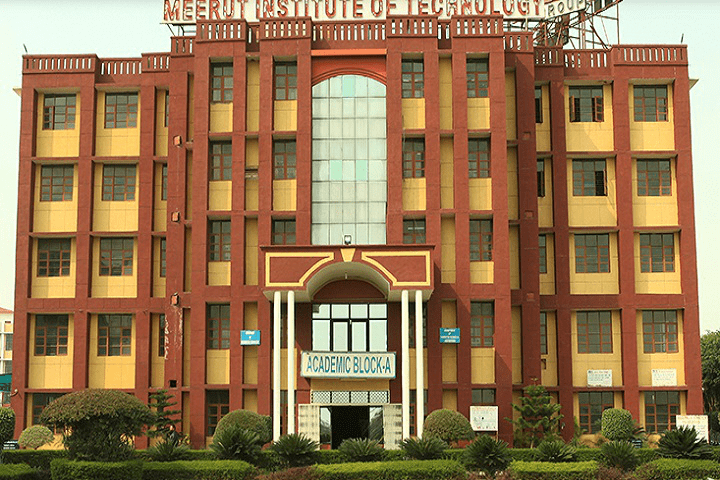

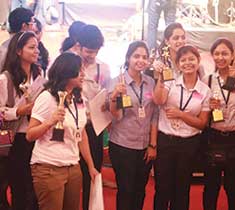
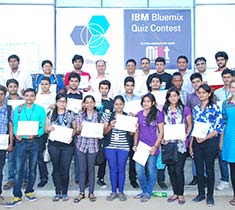



.png)



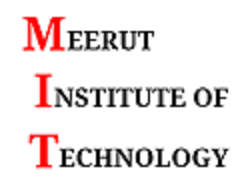
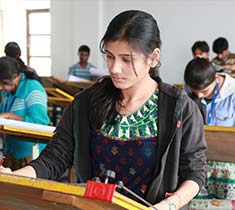

.png)